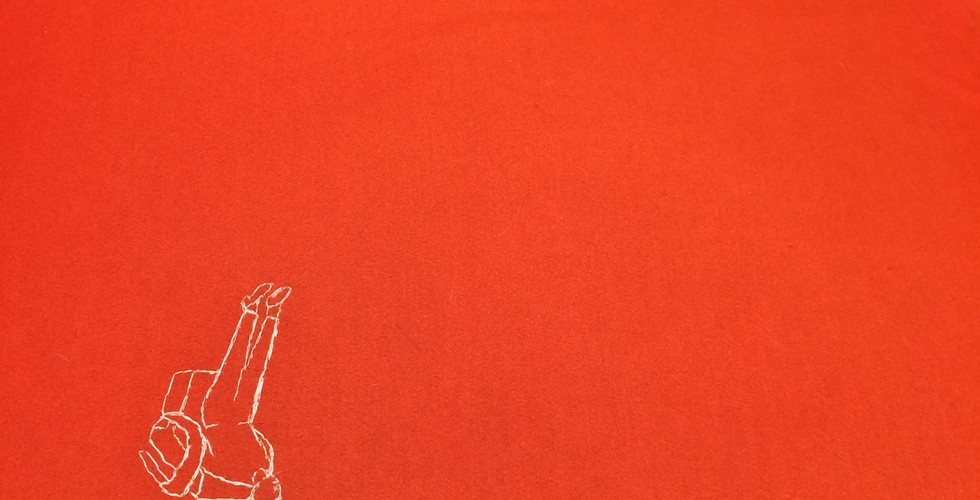Erwin Wurm: Ethics demonstrated in geometrical order
In Ethics demonstrated in geometrical order, the new Erwin Wurm exhibition at Lehmann Maupin gallery, sculpture and audience participation go hand in hand. Interspersed with other, unsettling works, Wurm’s One Minute Sculptures are the highlight. From a cursory glance one sees furniture with crisp, clean edges and a dated feel; this is not the type of furniture one would commonly find in American stores. Upon closer examination, the viewer sees outlandish holes in the furniture, as well as pictorial instructions drawn directly on the pieces. This combination of elements is what comprises the One Minute Sculptures. But the juxtaposition of curious and mundane is not complete without the viewer; this can literally be evidenced in the gallery checklist, as “realized by public,” is listed on each sculpture’s material list.

Spaceship to Venus, 2016, instruction drawing, Aalto Tank lounge chair model 37, and realized by public.
There is a sense of hesitation, as well as questioning that accompanies the One Minute Sculptures. I knew that I was supposed to follow the crude cartoon directions and physically interact with the work, but I also felt that I was doing something I wasn’t supposed to be doing. And this is precisely what makes the exhibition so intriguing. My personal feelings of uncertainty and my final (albeit reluctant) resolution to stick my head in a tv cabinet or under a lamp completed the works, and gave me, the viewer, a sense of satisfaction in being directly involved and being part of the performance.

Roast yourself under the sun of Epicure, 2016, instruction drawing, lamp, and realized by public.
The other, more traditional sculptures complement the interactive ones. In “Equitable,” Wurm has cast a miniature version of the Equitable building. Unlike the impressive original that symbolizes growth and New York City, Wurm’s version is off-putting. The building is a sickly pink and haphazardly leans; it also looks to be melting, as if it is in danger of creeping off its pedestal at any moment. In “3 Legs,” a human-like creature confronts the viewer head on; a third leg replaces the torso, head, and arms of a person. The sculpture is life-size, making it particularly disturbing.

Head TV, 2016-2017, instruction drawing, Danish cabinet, and realized by public, dimensions variable.
The different sculptures coalesce, creating an atmosphere of unease. The viewer is reeled in to the work by being an essential piece of its completion, while also being distanced from the work by the dark, confrontational elements. While viewing the work, I wondered if most visitors really did hop up on the pedestals and follow the directions. I didn’t witness it happening, but as evidenced by the scuffs on the white pedestals, people did indeed participate. My recommendation is to go and experience Wurm’s art with a friend, if you are like me and are hesitant to get up close and personal with art that is normally off limits.









